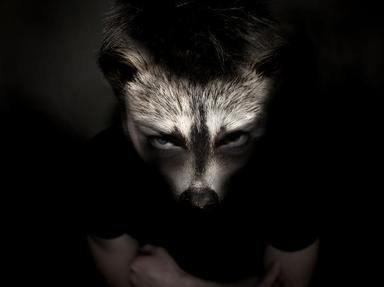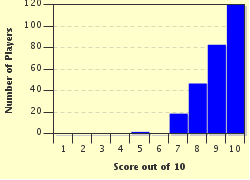Quiz Answer Key and Fun Facts
1. The animal represented in the photograph is a relative of the horse that can be found primarily in the savannas of Africa. The pattern of each individual animal's stripes is as unique as the pattern of each human being's fingerprints. What animal is this?
2. The animal shown in the photograph represents a kind of bird found in tropical and subtropical regions all over the planet earth. What kind of very intelligent bird is this, seen often in zoos and even in some people's homes as pets?
3. Different species of the animal in the photograph can be found in Asia and Africa, and it is easily recognized because of the long appendage it has for a nose, which it uses for breathing, smelling, making noise, touching, grasping, and spraying water. What is this animal?
4. The animals in the photograph are a kind of animal that has been domesticated for at least 10,000 years. Some use them for their meat, their milk, and their hair, and some keep them as pets. What is this relative of the sheep?
5. The animal hiding in the foliage in the photograph is a popular pet found all over the world, usually in people's houses. This particular one has the markings of a tabby. Which animal is this?
6. Many of these animals represented by the one in the picture rely on echolocation to determine size, distance, and velocity of objects before them. What animal would this be?
7. The animal in the photograph can grow as long as three meters or ten feet and can weigh as much as 70 kg or 150 lbs, measurements that make it the largest of its family of reptiles. What is this creature with a venomous bite?
8. There are many different families of this kind of fish whose tail is visible in the photograph, but they are all easily recognizable. Most have slippery, scaleless skin and barbels that resemble whiskers extending from their faces. What kind of a fish is this?
9. The tails of these particular crustaceans, like the one pictured, are often eaten; some people will even pay a great amount of money for these tails. Of course, the chef must first break through this animal's tough exoskeleton. What kind of animal is this?
10. These furry creatures, like the one in the photograph, can be seen in the trees and yards surrounding many people's homes. Some love to watch their playfulness and ingenuity; some find them to be pests. What kind of animal is this with a long bushy tail?
Source: Author
alaspooryoric
This quiz was reviewed by FunTrivia editor
NatalieW before going online.
Any errors found in FunTrivia content are routinely corrected through our feedback system.


